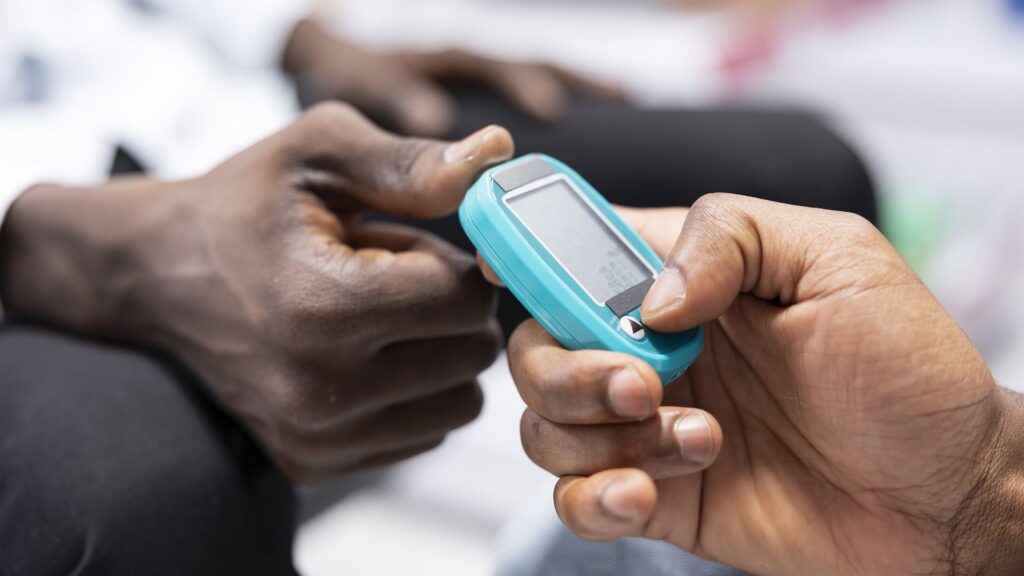Scientists have officially recognized a new type of diabetes, called type 5 diabetes, that is thought to affect 20 million to 25 million people worldwide.
The disease is most common in Asia and Africa, where it was first identified more than 70 years ago but has been largely ignored until now.
Traditionally, medical textbooks describe three main types of diabetes. In type 1, the immune system mistakenly attacks insulin-producing cells in the pancreas, causing dangerously high blood sugar levels and the risk of ketoacidosis. Ketoacidosis is a potentially life-threatening condition in which the body breaks down fat for energy. Type 2, the most common, occurs when the body does not respond properly to insulin or does not produce enough insulin. Gestational diabetes occurs temporarily during pregnancy and is characterized by insulin resistance, which is thought to be caused by hormonal changes.
you may like
Additionally, there are other rare forms of diabetes that can be caused by certain genetic mutations or diseases. But now scientists say there is another type of diabetes that has a completely different cause than other types.
At an international conference of experts held in India earlier this year, it was officially classified as type 5 diabetes. (They chose the label “type 5” because other researchers have already proposed “type 3” and “type 4” for other forms of diabetes.)
“Type 5 diabetes, like other forms of diabetes, is characterized by insufficient insulin secretion, which leads to elevated blood sugar levels,” Dr. Rachel Reinert, an endocrinologist and assistant professor at the University of Michigan, told Live Science via email. “However, type 5 diabetes is not associated with autoimmunity (as in type 1 diabetes) or insulin resistance (as is common in type 2 diabetes),” she said, and also lacks features of the more rare types 3 and 4 diabetes.
“People with type 5 diabetes are typically underweight and have a history of malnutrition from an early age,” Reinert said. Doctors believe that chronic nutritional deficiencies may damage the pancreas early in life, permanently weakening insulin-producing cells. Therefore, the pancreas cannot produce enough insulin, but when insulin is given to the patient as a treatment, the cells are able to respond to it.
Treatment of type 5 diabetes must be carefully managed because too much insulin and too little food (a common reality in low-income countries) can lead to dangerous hypoglycemia. “It’s important for all diabetics to know what type of diabetes they have in order to receive appropriate treatment,” Reinert said.
yoda research
A study of juvenile diabetes in sub-Saharan Africa (YODA), published earlier this year in The Lancet Diabetes & Endocrinology, renewed interest in the disease. The research team initially set out to study type 1 diabetes in around 900 young people in Cameroon, Uganda and South Africa.
However, when researchers analyzed blood samples, they found that approximately two-thirds of the participants lacked the autoimmune markers found in type 1 diabetes. Further testing revealed that these people, unlike classic type 1 cases, still produce small but measurable amounts of insulin. However, their insulin levels were below the range normally seen in type 2 diabetes. These findings indicated a distinct, non-autoimmune, insulin-deficient type of diabetes.
you may like
This was not the first time in history that such a situation was observed.
In the early 1950s, British physician Philip Hugh Jones encountered a group of 13 patients at his diabetes clinic near Kingston, Jamaica, whose symptoms did not fit either type 1 or type 2 diabetes. Hugh Jones called their condition Jamaican ‘Type J’, but the label was forgotten and the condition was ignored for decades.
What’s in the name?
Naming a disease correctly not only guides clinicians to the best treatment options, but also helps researchers track its prevalence and identify which factors influence patient outcomes, Reinert said.
Type 5 diabetes may have been around for decades, but it is poorly understood due to a lack of research. Chittaranjan Yajnik, head of the diabetes unit at KEM Hospital in Pune, India, and co-author of the international consensus statement on type 5 diabetes published in Lancet Global Health, said awareness is key to ensuring the condition is no longer overlooked.
“More research and funding is needed to study the pathogenesis.” [causes]mechanisms and treatments,” he told LiveScience in an email. “The name is important to get attention from stakeholders and funding opportunities, otherwise it gets lost in the background noise of common types of diabetes.”
This article is for informational purposes only and does not provide medical advice.
Source link

